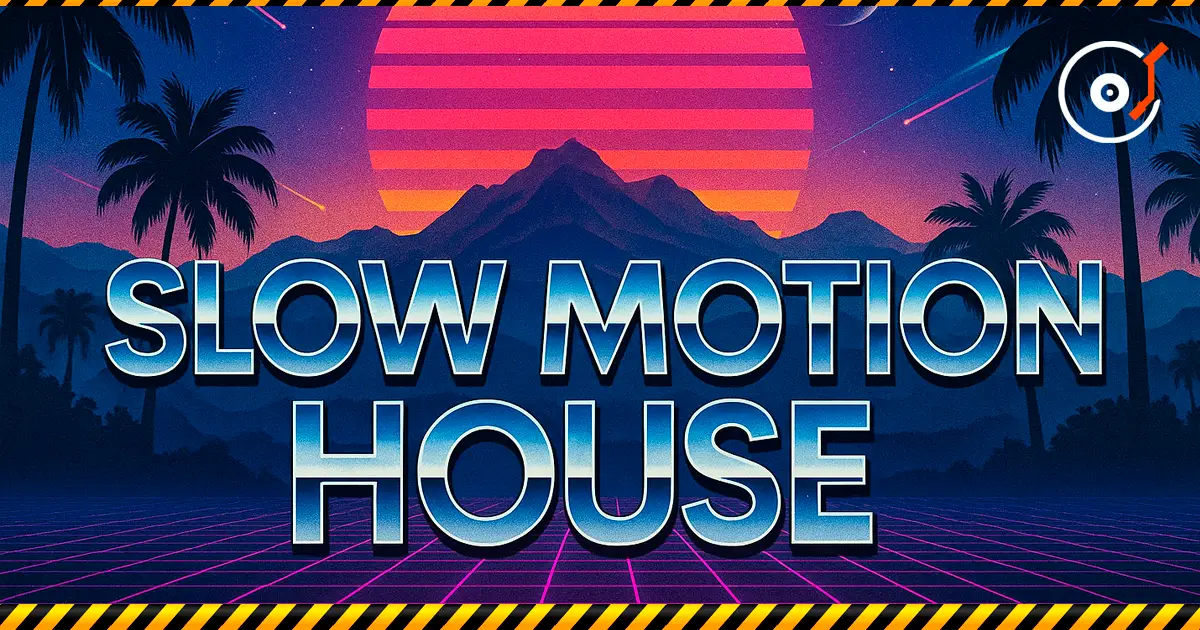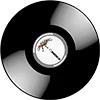
Slow Motion House (slo-mo house / chug) — hypnotic mid-tempo at 90–108 BPM: Balearic atmosphere, warm bass, psychedelic synths, key artists, and a production guide.
Slow Motion House (also known as slo-mo house, chug, sometimes “drug-chug”) is a slow, hypnotic branch of house and disco at reduced tempos. It favors a syrupy groove and a cinematic mood over peak-time dancefloor energy: dense percussion patterns, organic basslines, an analogue feel, psychedelic synths, ethnic/rock textures, and long transitions.
Key sound traits
-
Tempo: typically 90–108 BPM (sometimes 110–112).
-
Groove: rolling mid-tempo with emphasis on hats and percussion; the kick is softer than in techno/house.
-
Bass: warm and thick, often with a live flavor (Moog/SH-style), short repeating riffs.
-
Synths & FX: arpeggios, flanger/phaser, tape wobble/tremolo, cosmic leads, guitars with pedals, Indian/Middle Eastern timbres.
-
Atmosphere: Balearic, psychedelic, “night highway,” a touch of dampness and vintage patina.
Where it came from
-
Balearic/disco re-edits of the ’80s/’90s set a meditative pace and eclectic source palette.
-
Nu-disco and indie dance in the 2000s brought live-leaning bass and rock aesthetics.
-
Post-punk/EBM/Italo added chilliness and mechanical drive at low speed.
-
In the 2010s the aesthetic was cemented by the “A Love From Outer Space” DJ sets from Andrew Weatherall & Sean Johnston (manifesto: nothing over 122 BPM, often far lower). In parallel, the Hivern Discs, Correspondant, ESP Institute, Multi Culti, Les Disques De La Mort, Permanent Vacation, Running Back camps pushed mid-tempo releases that became touchstones.
Substyles & neighboring zones
-
Chug / Drug-Chug. Tougher: rock riffs, EBM bass, darker synths.
-
Balearic slo-mo. Sunnier and softer: percussion, guitars, organ, warm pad-synths.
-
Indie Dance / Dark Disco. Close relatives with sharper lead synths and dramatic chords.
Artists & labels to start with
-
Andrew Weatherall & Sean Johnston (ALFOS) — the gold standard for sets and the “don’t rush” ethos.
-
Jennifer Cardini / Correspondant, Cosmo Vitelli, Ivan Smagghe / Les Disques De La Mort — darker and more cinematic.
-
Red Axes, Moscoman, Manfredas, Simple Symmetry, Khidja — ethnica, psychedelia, rock textures.
-
ESP Institute (Lovefingers), Hivern Discs (John Talabot), Multi Culti, Permanent Vacation, Running Back — catalogs worth digging deep into.
-
Also: Marvin & Guy, Damon Jee, Pale Blue, Tolouse Low Trax, Roe Deers, Curses.
Typical track structure
-
Intro (16–32 bars): noise layers, percussion; bass enters gently.
-
Main groove: kick + percussion + bass loop; gradual filter automation.
-
Long break: delays/reverbs, bass held, sculpting the noise bed.
-
Return + variations: add a new synth/guitar figure or transpose the bass.
-
Outro: group-by-group fade, leaving percussion/FX.
Production guide (practical)
Tempo & rhythm
-
92–106 BPM is the “sweet spot.” Subtle swing or micro-shakes on the hats enliven the roll.
-
A kick without excessive snap; parallel compression on the drum bus and light saturation.
Bass
-
Mono up to ~120 Hz, warm overdrive, short notes (1–2-bar mantra).
-
Often a pair: mid-bass (distorted) + sub-sine.
Synths/guitars
-
Arpeggios with moderate resonance; phaser/flanger/chorus for a hint of “bad-weather” haze.
-
Guitars through tape/spring reverbs; quartal riffs of 2–4 notes.
Sound & space
-
Long tails, but keep the low-mids tidy (sidechain/dynamic EQ).
-
Noisy “watersheds” (looped noise, foley wind) as glue between sections.
Arrangement
-
Less “drop,” more “drift”: change micro-details every 8–16 bars.
-
Vocals — more whispers/shouts/mantras; sometimes post-punk-style speak-singing.
Recommended listening (starter playlist)
-
Red Axes — Sun My Sweet Sun / Waiting For A Surprise
-
Moscoman — Mexican Cola Bottle Baby
-
Jennifer Cardini & Damon Jee — Haunting
-
Simple Symmetry — Voodoo Your Ex
-
Khidja — Impossible Holiday
-
Curses — Gold & Silber
-
Marvin & Guy — The Train Of Fantastic
-
Tolouse Low Trax — Rushing Into Water
-
A Love From Outer Space sets (ALFOS) — a masterclass in narrative flow.
How Slow Motion House differs from classic house & nu-disco
| Comparison | Slow Motion House | Classic House / Nu-Disco |
|---|---|---|
| Tempo | 90–108 BPM | 118–126 BPM |
| Dynamics | Hypnotic “roll” | Euphoric “rise/drop” |
| Textures | Psychedelia, ethnica, guitars, EBM hints | Disco strings, filter-house, bright vocals |
| Vocal | Minimal, mantras/shots | Verse-chorus, disco hooks |
FAQ
Is it a house subgenre or a standalone scene?
Both: rhythmically it’s house/break-disco, aesthetically it’s an autonomous mid-tempo culture with its own labels and parties.
How do you “ignite” a floor at slow tempos?
Dense bass, clear percussion, long builds, gradual layer shifts; work with gradation instead of hard drops.
Do you need ethnic/rock samples?
Not necessarily: you can build it all from synths and foley. Still, the hybrid of “live” sources and analogue hardware is a signature touch.
Summary
Slow Motion House is “outer-lane” music: less tempo, more depth. It holds the room with thick bass, detailed percussion, and cinematic layers rather than chasing peak drops. Ideal for warm nights, late-hour dancefloors, and long, tasty transitions.

